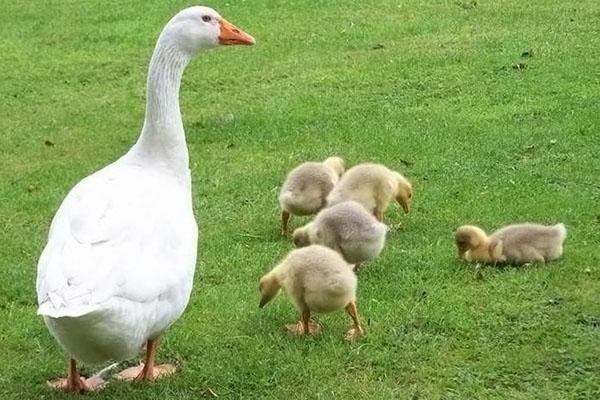How to choose a goose for breeding work
 Geese are the second largest poultry population in the world. They are second only to chickens. There are about 3,000 goose breeds and subspecies in the world, and breeders are constantly developing new ones.
Geese are the second largest poultry population in the world. They are second only to chickens. There are about 3,000 goose breeds and subspecies in the world, and breeders are constantly developing new ones.
Breeding your own breed is a painstaking and long-term task. It requires careful selection of individuals and maintenance of at least four independent genetic lines. Nevertheless, every farmer can carry out breeding work with an existing breed and bring out his own young stock.
External signs of a gander-producer
To breed the young, it is necessary to select a breeding goose for the main and replacement herd. The herd of goose is called "herd". The breeding gander is not just the leader of the herd, but also an exemplary representative of its breed. He must meet all the stated standards. Pay attention:
- feather coloring;
- eye color;
- beak shape.
A careful check of external signs is necessary to maintain the purity of the breed.
Each breed has its own distinctive characteristics. For example, the “Danish Lagart” breed should have a solid white color without black and brown spots, a bright orange even beak and black eyes.
Representatives of the Tula humpbacked breed geese should have a black beak with a greenish tint and a characteristic hump on the bridge of the nose, as well as blue eyes. Goslings have black eyes.
A goose suitable for breeding must not have beak curvatures, wing defects or any other abnormalities.
Goose anatomy
Geese suitable for their appearance must undergo anatomical selection. It is necessary to examine the individual's wings. The first row of flight wings must contain at least 10 feathers, the second - at least 12.
It is very important to pay attention to the "scissors" - a pair of feathers on the tip of the gander's wing. The upper feather should be narrower and longer than the lower one, otherwise the goose will cover only one goose. The tail should have 18 to 20 feathers.
There should be a distance of four fingers between the pelvic bones of the gander. The manufacturer has a double fatty gland on the back. It is believed that a goose with such a gland will be the most prolific.
Pay attention to the number of bumps inside the beak. If there are 10 to 18 of them, then the goose has entered the period of puberty. The more tubercles in the beak of a gander, the more fertile it is. The manufacturer's weight should exceed the standard weight of the breed by 1-2 kg.